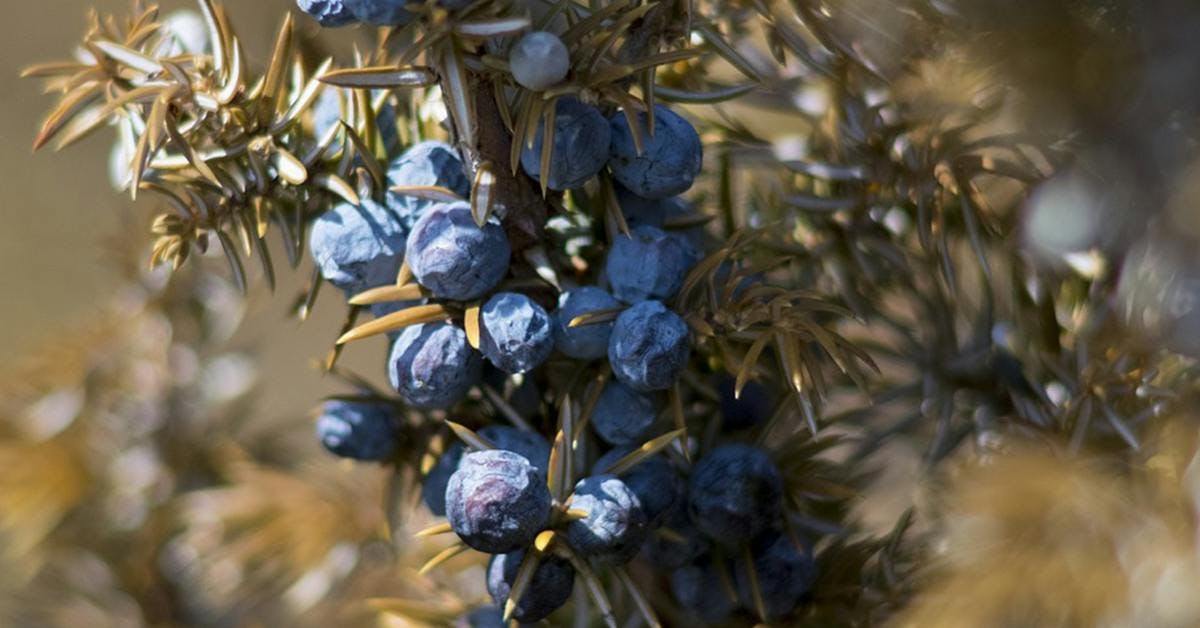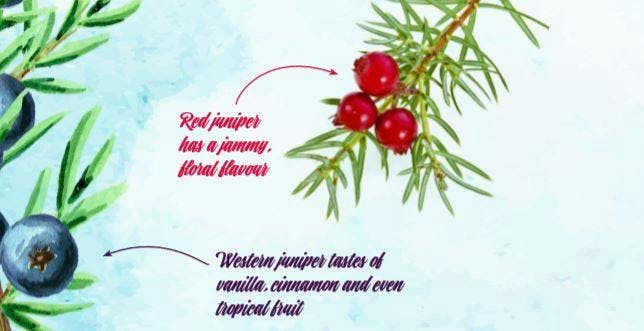
A Look At The Tree That Helps Create Gin
To abide by the legal definition of gin, a spirit’s primary flavour and aroma must be the piney freshness of juniper. This Ginmas let us give you the scoop on our favourite evergreen!
What’s your type?
There are over 50 species of juniper, offering a cornucopia of flavours. They are all, however, evergreen! Here are some alternatives to the widespread Common Juniper: • The berries of Pinchot Juniper have a Christmassy red colour rather than the bluish hue of most juniper berries, and have a jammy, floral flavour. • Alligator Juniper’s bark is patterned like the animal after which it’s named. It smells similar to cedar, and its berries taste strongly of vegetation. • Western Juniper is the tallest variety of juniper, and its berries taste of creamy vanilla, cinnamon and even tropical fruit. One tree of this species is the Bennett Juniper, which grows in California and is 3,000 years old. That’s older than Christmas itself!

If you’re picking your own juniper, beware! Some species are poisonous, including the Eastern Red Cedar
Worldwide Star….
Juniper is mind-bogglingly robust, cropping up all over the world! Japan, Pakistan, Siberia, Canada, Norway, Iceland and Greenland are just a few of the places it lives. Where juniper is picked influences its flavour, due to specific types of soil and weather. We use the word ‘terroir’ to describe wine regions, and it can also be applied to gin. Aaron Knoll, author of Gin: The Art and Craft of the Artisan Revival, makes a few observations about the flavours of juniper from various European terroirs:
• In the Netherlands, juniper’s taste is reminiscent of mint and rosemary.
• Arezzo, Italy offers up juniper with a burst of heat, balanced by hints of vanilla and citrus.
• The juniper from Istok, Kosovo is at once crisply piny, floral and as sweet as cherries.
• Juniper from Skopje, Macedonia has a finish reminiscent of sea salt and almonds.

While juniper thrives around the world, it’s threatened by extinction in the UK. If you love gin, have free space in your garden and want an easy botanical project, grow juniper!
Stepping Back In Time…
This jack-of-all-trades plant has had ritual, medical and culinary functions for 12,000 years, since Neolithic farmers first started experimenting. Let’s discover some:
• In around 1323 BC, the famous Egyptian pharaoh Tutankhamun was buried with juniper!
• Juniper was used by Greek Olympic athletes because they believed it would increase their physical stamina. • Legend has it that Jesus, Mary and Joseph hid from the murderous King Herod in a juniper bush shortly after the first Christmas.
• In the 14th century ‘plague doctors’ wore juniper in their beaky masks, as they thought the scent of juniper would fight the Black Death.
• In an old New Year’s tradition performed by Scottish Highlanders, juniper was burned to ward off evil spirits. According to writer Edward Abbey, “the odour of burning juniper is the sweetest fragrance on the face of the earth.” Maybe this is a tradition ready for revival!
All







